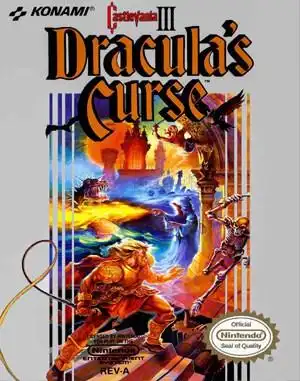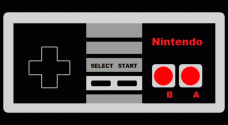Why Castlevania III: Dracula’s Curse is an NES Masterpiece
Remember the feeling of plugging in that grey cartridge, the Konami logo flashing, and the haunting music starting? For many retro gamers, that feeling is synonymous with the legendary Castlevania series. While the first game set the stage and the second took a controversial detour, it was Castlevania III: Dracula’s Curse that truly cemented the formula, refined the challenge, and delivered what many consider the pinnacle of the series on the original Nintendo Entertainment System.
Released in 1989 in Japan (1990 elsewhere), Dracula's Curse wasn't just a return to the linear, whip-cracking action of the original; it was an evolution. Set a century before Simon Belmont's quest, this prequel put you in the boots of Trevor C. Belmont, tasked with stopping Dracula's reign of terror in 1476 Wallachia. But Trevor wasn't alone this time, and that made all the difference.
Back to Basics, But Better
After the RPG-lite exploration of Castlevania II: Simon's Quest left some fans divided, Konami wisely brought Castlevania III back to its roots. The focus was on tight platforming, challenging combat against iconic horror creatures, and navigating treacherous levels with your trusty whip and sub-weapons.
However, it wasn't just a retread. The controls felt more responsive, the level design more intricate, and the sheer variety of enemies and environments was a significant step up. From cursed pirate ships to flooded cities and eerie forests, the journey to Dracula's castle was anything but monotonous.
The Revolutionary Companions
The most groundbreaking addition in Castlevania III: Dracula’s Curse was the ability to recruit allies to fight alongside Trevor. Scattered throughout Wallachia were three potential companions, each offering a unique playstyle and set of abilities that dramatically changed how you approached the game:
- Alucard: Dracula's half-vampire son. He can shoot fireballs and, more importantly, transform into a bat for limited flight, allowing you to bypass certain obstacles or find hidden paths.
- Grant Danasty: A nimble pirate and wall-climber. Grant excels at platforming, can cling to and move along ceilings and walls, and throws daggers rapidly. While perhaps the least powerful offensively in a straight fight, his mobility is unmatched.
- Sypha Belnades: A powerful sorceress. Sypha is fragile but wields devastating elemental magic (ice, fire, lightning) that can clear screens or exploit boss weaknesses, often making challenging encounters much easier.
You could only have one companion at a time, switching between them and Trevor on the fly. Choosing who to recruit (and you couldn't get all three in one playthrough) wasn't just a matter of preference; it influenced your entire strategy and opened up different routes through the game.
Paths Less Traveled: Branching Routes
Speaking of different routes, Dracula's Curse was one of the first NES games to feature significant branching paths. After clearing certain stages, you were often presented with a choice of which level to tackle next. These choices weren't just cosmetic; they led to entirely different sets of stages, enemies, and ultimately, determined which potential companion you might encounter (or miss entirely).
This system gave the game incredible replayability. To see every stage and recruit every potential ally, you had to play through the game multiple times, making different choices along the way. It encouraged exploration and experimentation in a way few games did back then.
A Challenge Worth Conquering
Let's be clear: Castlevania III: Dracula’s Curse is tough. It's an NES-era Konami game, after all! Enemies hit hard, pitfalls are common, and bosses require precise timing and mastery of your chosen character's abilities.
However, compared to the sometimes brutally unfair difficulty spikes of the first Castlevania, Dracula's Curse feels more balanced and, dare we say, fairer. The challenge feels earned, and overcoming a difficult boss or navigating a particularly nasty platforming section is incredibly satisfying. The game pushes you, but rarely feels cheap (though some might argue about specific enemy placements!).
Looks Good, Sounds Great
Even by late NES standards, Castlevania III was a technical marvel. The sprites were detailed, the environments varied and atmospheric, and the game pushed the system's capabilities with minimal slowdown, even with multiple enemies on screen.
And the music? Oh, the music! Composed by the legendary Hidenori Maezawa, Jun Funahashi, Yukie Morimoto, and Yoshinori Sasaki, the soundtrack is iconic. Tracks like "Beginning," "Bloody Tears" (returning from CV2), and "Aquarius" are absolute bangers that perfectly capture the game's gothic atmosphere and energy. It's easily one of the best soundtracks on the NES.
Why It Still Holds Up
Decades later, Castlevania III: Dracula’s Curse remains a beloved classic for good reason. Its tight gameplay, innovative companion system, branching paths, challenging-but-fair difficulty, and incredible presentation make it a joy to revisit.
Whether you originally played it on a CRT TV or are experiencing it for the first time via modern collections like the Castlevania Anniversary Collection on Switch, PlayStation, Xbox, and PC, the magic of Dracula's Curse endures. It's a perfect example of how to iterate on a successful formula, introduce meaningful new mechanics, and create a truly memorable gaming experience.
Final Thoughts
If you're a fan of retro games, action-platformers, or just want to see where a major gaming franchise hit an early peak, Castlevania III: Dracula’s Curse is essential playing. It's not just a historical curiosity; it's a genuinely fun, challenging, and rewarding game that stands tall as one of the best the NES had to offer. Go grab your whip – Wallachia awaits!
FAQs
Q: Is Castlevania III a prequel or sequel? A: It's a prequel! It takes place in 1476, 100 years before the events of the first Castlevania, featuring Trevor Belmont.
Q: How many companions can you have in Castlevania III? A: You can recruit up to three different companions (Alucard, Grant, Sypha), but you can only have one active companion with you at any given time, in addition to Trevor.
Q: Is Castlevania III harder than the first Castlevania? A: While still very challenging, many players find Castlevania III to be fairer than the first game, with fewer cheap deaths and more consistent difficulty, especially with the help of companions.
Q: Where can I play Castlevania III today? A: The easiest way is through the Castlevania Anniversary Collection, available digitally on Nintendo Switch, PlayStation 4, Xbox One, and PC (Steam). It's also available on Nintendo Switch Online for subscribers.


